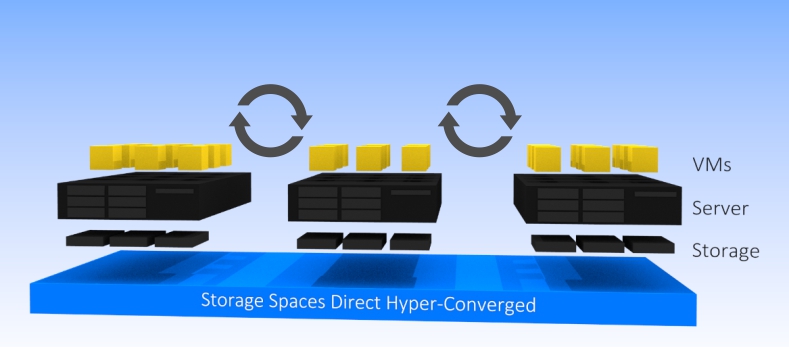High availability and data storage with Storage Spaces Direct (S2D)
Storage Spaces Direct (S2D) is a function of Microsoft Windows Server (starting with version 2016) to build a software-defined storage solution. The use of additional hardware storage is not necessary.
Storage Spaces Direct is the corresponding function that paves the way to high availability solutions on server basis. A common storage space is created - the so-called Storage Space - which extends over several storage media / data carriers. On this common storage space, storage units (volumes) are managed, which behave like local drives. This is all called "hyper-convergence" - the merging of different resources under one management.
When using Storage Spaces Direct, a central storage can be dispensed with, since the storage media of the connected servers are accessed here and the failure of components (e.g. in the event of an accident) is compensated for via the shared storage space. Even if two complete servers fail, the functionality of Storage Spaces Direct intercepts these failures and maintains operation.
Storage Spaces Direct - commercial advantages
- Building high availability without centralized storage
- No special hardware necessary - use of standard servers and Ethernet
- Full scalability when expanding the solution
- Flexibility in the use of hardware, since the solution works software-defined
Storage Spaces Direct becomes Azure Stack HCI
Microsoft Azure Stack HCI was developed on the basis of Storage Spaces Direct ( S2D ) starting with Windows Server 2019. Click here to go to the current Microsoft hyper-convergent system.



